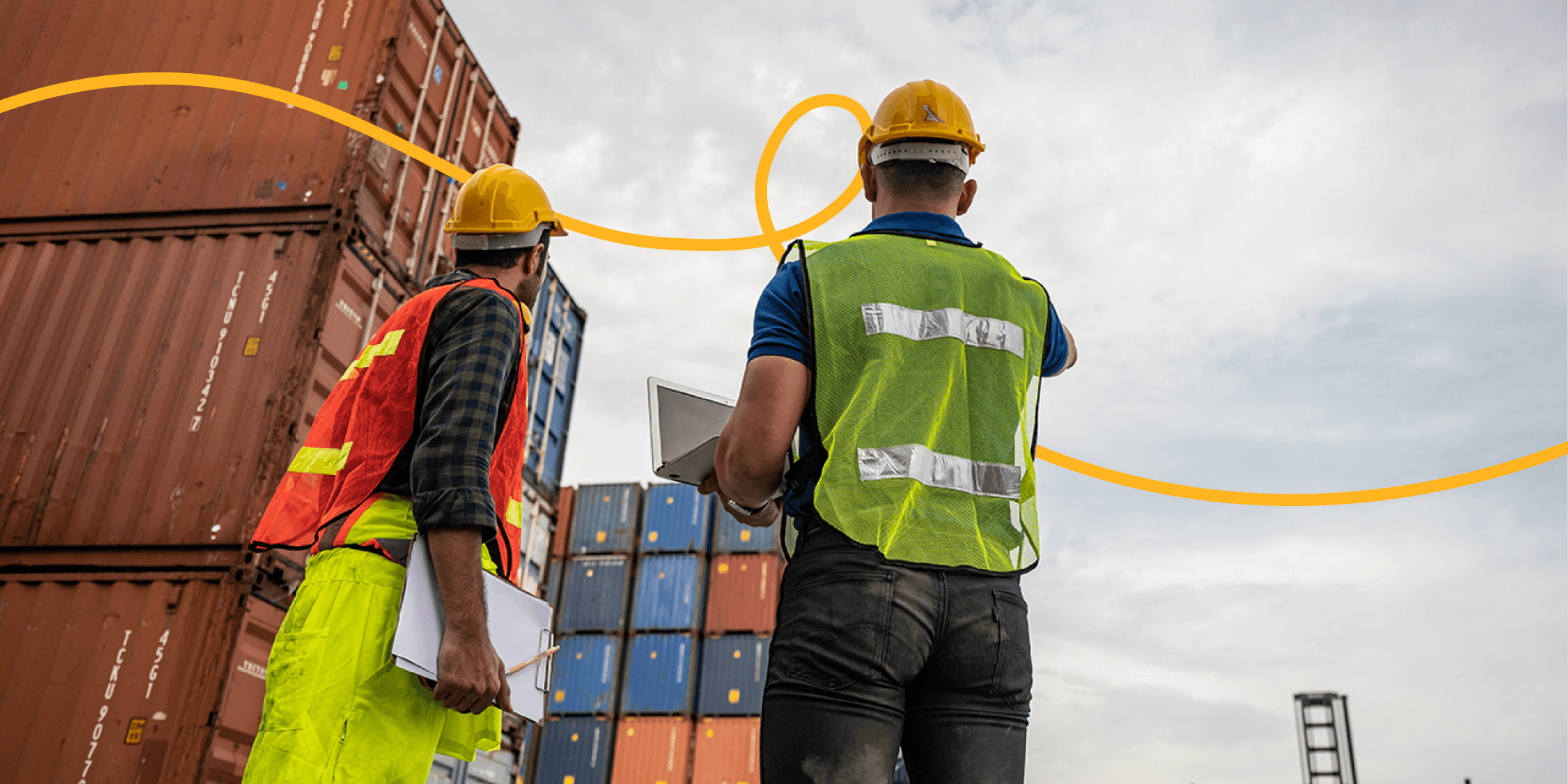How To Nail Internal Comms for Transport & Logistics Employees

Caitlin Kirwan
External Contributor - Internal Comms & Engagement Expert
February 12 2024

The global logistics sector was worth a whopping $7.98 trillion in 2022. And alongside the transport and warehousing sectors, last year the industry provided jobs to an estimated 15.8 million people in the US alone – the highest number in over 30 years. With more growth on the horizon, HR, IC, and employee experience leaders need to tackle internal communication challenges head-on to ensure they can engage and retain their best people.
The global logistics industry is predicted to exceed $18.23 trillion by 2030, so the race is on to find, develop, and retain the best talent.
These sectors employ people across a huge range of areas including wholesale, logistics, supply chain, transportation, trucking, and import and export. Employees are regularly on the go, have limited access to company devices, and work different shifts.
It’s no surprise that effective internal communication can, therefore, be a challenge.
But regular and transparent communication is a non-negotiable when it comes to building an engaged, motivated, and loyal workforce – all things that are required for companies to thrive through a period of rapid growth. So how can HR, IC, and employee experience leaders in transport and logistics overcome communication barriers to support engagement and retention?
Challenges in internal comms for transport and logistics companies
In order to improve communication for transport and logistics employees, the first step is to understand the challenges and barriers.
The 2023 Deskless Report from Axonify showed us that only 35% of frontline workers think the communication they receive is effective, and over a third feel that fractured communication creates challenges in their day-to-day work.
Let’s consider what might be causing this in transport and logistics.
Complex staffing models
The staffing models used by many organizations in the transport and logistics industries are complicated, and often dependent on alternative delivery models that utilize support from self-employed independent contractors, agency workers, and temporary drivers.
This approach makes total sense when you consider the organization’s ability to flex to supply and demand, reduce productivity lags, and handle unexpected employment waves. But it creates a number of challenges for internal communicators, who may struggle to even gain access to large groups of their audience, let alone engage them effectively.
Building a sense of connection, engagement, and loyalty is no mean feat when a significant percentage of your frontline team members are third-party workers who may have very little interaction with the company itself.
An on-the-go operational workforce
As is the case with many frontline workers in operational environments, relying purely on traditional communication channels just isn’t going to cut the mustard.
Transport and logistics employees spend the majority of their time either behind a wheel or on their feet, not behind a desk with on-demand access to the company intranet and email account. They’re working different shift patterns, and often simply don’t have the time or ease of access to spend more than a few minutes reading and responding to internal messaging.
There are more effective ways to communicate with your frontline transport and logistics colleagues than sending a company-wide email or publishing an update to the intranet homepage.
Tips to improve internal comms for transport and logistics employees
Given the challenges, developing a kick-ass internal communication strategy for transport and logistics employees may feel like a tall order! But the rewards are great for the organizations that get it right.
Effective internal communication creates alignment between frontline workers and their companies, which enhances employee loyalty, improves engagement, boosts motivation, and reduces attrition. To get there, internal communicators need to work on building employee understanding of how their daily work aligns with – and contributes to – the overall success of the company.
“...when individual workers understand how their efforts contribute directly to their success and to the success of the company, they tend to be more motivated and feel a greater commitment. Feeling that their work is worthwhile and that their goals are part of a broader corporate purpose is important to many” – PwC, Transportation & Logistics 2030
I’ve pulled together three tips to help you improve communication and build this all-important connection, right across the transport and logistics workforce.
Create communication zones in depots and warehouses
Creating physical ‘communication zones’ as part of the rest areas in depots, warehouses, and terminals is a great way to connect with transport and logistics workers on the front line.
A tablet bar that offers access to the intranet news hub, a seating area with copies of print newsletters, and an interactive board where team members can submit questions and feedback all help to build engagement and connection.
The zones shouldn’t replace operational boards and screens that share important tactical information on things like KPIs. Instead, they should be a complimentary addition to provide workers with easy access to central company communications and updates.
Enable real-time communication
This tip is all about establishing the right channels to enable real-time communication for frontline transport and logistics workers.
An interactive employee app like Workvivo helps to level the playing field when it comes to communication channels, ensuring every team member has important information and updates at their fingertips.
Anne-Marie Griffiths, Head of Internal Communications & Engagement at DHL, recently spoke about the launch of a mobile employee app to all 40,000 colleagues across the UK and Ireland. With almost 400 sites across the region and only a quarter of employees having access to email, the app has enabled Anne-Marie’s team to share messages and updates with the wider population in real time.
“Our frontline colleagues are a fantastic source of news – because they are able to share their own stories and best practice with other colleagues, and even reach out for help, we’ve learned so much about what’s going on in our business every day. And we’ve been able to use that and turn them into bigger features or respond quickly to solve problems before they grow too big” – Anne-Marie Griffiths, DHL
Another amazing channel to enable real-time communication is digital signage. Strategically placing digital screens in rest areas within operational environments offers an engaging and visual way to connect teams and share information while employees continue going about their daily work.
Facilitate awesome shift handovers
One of the most understated ways to improve communication for transport and logistics team members is to facilitate awesome shift handovers.
What’s this got to do with internal communications?! We hear you. But providing team leaders with the support and resources they need to deliver efficient and consistent shift handovers will significantly improve the flow of communication throughout the organization.
Creating templates, tools, and training to improve the quality and consistency of these handovers can help transform a mundane interaction into an opportunity for connection and engagement.
These relatively small actions can have a big impact.
After all, 61% of frontline workers prefer company communications and updates to come from their direct manager.
Say hello to Workvivo
With 90% of people adopting the Workvivo employee app, you can say goodbye to disconnected and disengaged employees and hello to a happy, inspired enterprise.
Come and say hello to schedule a free demo and see how the Workvivo platform can increase engagement within your organization!
